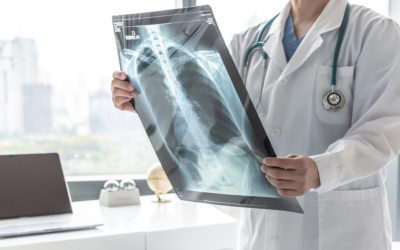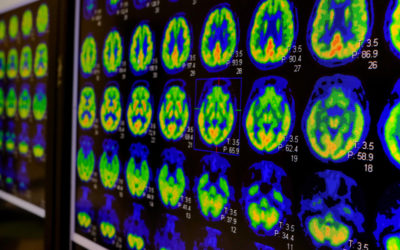Magnetic Resonance Imaging (MRI)
It’s clear—precision is important during diagnosis. Of all imaging technologies, MRI or Magnetic Resonance Imaging gives doctors the clearest, most precise image of the inside of the body. It’s sophisticated, and uses a strong magnetic field to show the structure and detail of organs, soft tissue and bones, which can pinpoint all types of issues from abnormalities to disease.
Vista Health System performs MRIs with your comfort in mind. Nervous about your test? Just speak to one the staff—we’re happy to help things be as stress-free as possible.
What is MRI?
Magnetic resonance images are produced by using two natural, harmless forces–magnetic fields and radio waves. Using this technology, Magnetic Resonance Imaging (MRI) is used to produce computer-generated images of the anatomy that can be used by physicians to obtain clinically useful diagnostic information; MRI exams are non-invasive, painless and have no known side effects.
Images created by the MRI scanner are performed without the use of radiation. Unlike an X-ray, the MRI can “see” through hard bone to the soft tissues in your body like muscles and internal organs. These images are very precise, showing the difference between normal and abnormal tissues. Used as a primary diagnostic tool, MRI can provide quick and accurate diagnostic information for your physician. In some situations, this procedure can reduce the need for further procedures such as exploratory surgery.
How MRI Works
MRI images are formed when signals generated with a magnetic field and emitted by body tissue are processed by computer software to create clinical images. Different tissue characteristics are revealed through this process and translated into different contrast levels on the image. A typical procedure averages 30 minutes or longer depending on the information required by your physician.
Open MRI vs. Closed MRI
Vista Health System offers both open and closed MRI scanners. The open environment helps some patients stay more relaxed during the test. And the new technology offers quality images as well as decreased testing time. Your doctor, in consultation with radiologists, will decide which scanner is best suited for you.
Why Use an MRI?
The MRI procedure is used for all parts of the body and is effective in the clinical evaluation of the following conditions:
- Brain Disorders
- Traumatic injuries
- Eye Abnormalities
- Spine diseases
- Tumor Detection
- Liver and Other Abdominal Disease
- Knee and Shoulder Injuries
- Musculoskeletal Disorders
- Facial/Neck Abnormalities
- Infection
- Cardiac Malformations
- Blood Flow and Vessel Disorders
For Your Appointment
Please wear comfortable, athletic-type clothing (a sweat suit, etc.) without metal snaps or zippers. Gowns will be available should you need them.
Because of the magnetic field in the magnet room, you will be asked to leave the following items in a locker outside the scan room:
- Coins
- Credit Cards
- Jewelry
- Glasses
- Watches
- Keys
- Hair Pins/Wigs
- Other Metal Objects
You may also be asked to remove makeup, dentures and/or hearing aids.
You will be asked if you have had brain, ear, eye or other surgeries or if you have any of the following:
- Pacemaker
- Neurostimulators (TENS-unit)
- Metal Implants
- Aneurysm Clips
- Surgical Staples
- Implanted Drug Infusion Device (insulin pump)
- Exposure of metal fragments to your eye
- Shrapnel
- Permanent Eyeliner
- Heart Valves (replacement)
If you are pregnant, please notify your physician and the technologist performing the exam.
Important: Please be sure to check with your physician if you are uncertain about any of the above mentioned items.
During Your MRI Exam
In the magnet room, a technologist will assist you onto the padded table. The table will move slowly into the magnet opening. You will hear sounds similar to a drumbeat as pictures of your body are formed. Your doctor may order contrast (dye) to be administered for your test to enhance areas he is concerned about.
At all times during the exam, a technologist will be able to see and hear you.
The exam takes anywhere from 30 – 75 minutes, depending on the type of MRI exam your doctor has requested. It is important to lie completely still while the images are being acquired. Motion will affect the sharpness of the images.
Claustrophobic Program
If ordered by your doctor, we offer an I.V. sedation program administered by an anesthesiologist to insure you the most relaxed experience possible during your MRI exam.
After Your MRI Exam
Because there are no side effects (unless you have had anesthesia), you may leave immediately following the procedure. A specially trained, board-certified radiologist will review your MRI images and provide a written report to your physician promptly. Results are normally available in less than 24 hours. Your doctor will schedule a time with you to discuss the results of your exam.
Need to cancel or reschedule an appointment?
Cancellations are sometimes unavoidable. However, should the need arise, please call 847-360-6930 to cancel or reschedule an appointment. This courtesy assists the staff in daily scheduling of other patients who may be waiting for an appointment.
Location
Vista Health System has three convenient north Lake County locations to provide easy access to area patients. Staff consists of specially-trained technologists and board-certified radiologists experienced in MRI technology.
- Vista Medical Center East – Waukegan
- Vista MR Institute – Gurnee
- Vista Ambulatory Care Center – Lindenhurst
For More Information
Call 847-360-6930
Related Services and Conditions
Diagnostic Imaging
At Vista Health System, we have board-certified technologists that capture quality images and ensure the comfort and safety of patients. These images are used to examine and diagnose certain medical conditions. Updated technology and diagnostic tools, including those...
Digital Mammography
More than 200,000 new cases of breast cancer are discovered in the U.S. each year. At , we know the value of early detection and mammography is a tool we use to identify potential issues. An x-ray of the breast, mammography is used to look for...
PET Scan
Vista offers patients the option of a positron emission tomography (PET) scan, which is an imaging test that uses a radioactive substance called a tracer to look for disease in the body. A PET scan shows how organs and tissues are working. This is different than...



